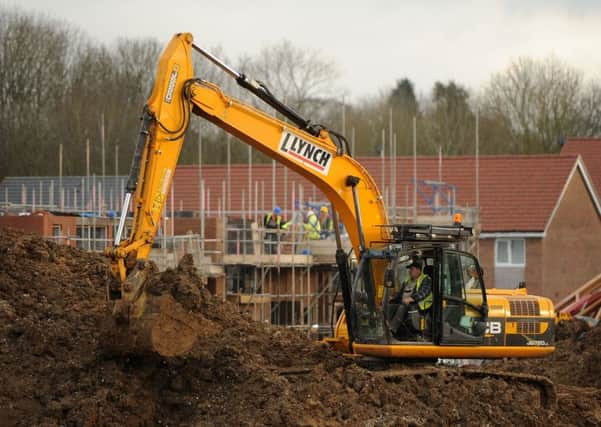Paul Miner: Eroding green belt won't solve housing crisis


England’s 14 green belts protect the breathing space between our towns and cities, preventing damaging urban sprawl. They encourage the much-needed regeneration of our urban areas, ensuring that new housing is built closer to existing amenities and that our towns remain exciting and vibrant places to live.
And they provide the countryside next door for 30 million people – offering easier access to England’s beautiful, natural landscape, and encouraging natural public facilities, like woodlands and local nature reserves.
Advertisement
Hide AdAdvertisement
Hide AdFor a number of years now, the current Government has claimed to share the general public’s love of the green belt – promising to protect these spaces better than previous administrations.
The Conservative manifesto for the 2015 general election contained a strong commitment to safeguarding such land. Prime Minister David Cameron even told CPRE President Andrew Motion: “Green belt land is extremely precious. Protecting the lungs around our cities is paramount for me.”
With reassuring comments like this coming from the people in power, you might be forgiven for thinking that our green belts are in safe hands.
Sadly, this doesn’t appear to be the case. New CPRE research into draft and accepted local plans shows that the Government’s promises look more like empty rhetoric: the number of houses proposed for the green belt is on the rise, and to unprecedented levels.
Advertisement
Hide AdAdvertisement
Hide AdLocal planning authorities are now planning for 275,000 houses on England’s green belts. This has shot up by 25 per cent, or 50,000 houses, in the past year, and is almost 200,000 more than were planned in 2012.
The situation in Yorkshire reflects this worrying trend. When we conducted our study last March, we found that 40,800 houses were planned for the green belt in Yorkshire. As of April 2016, that number is now 46,900 houses. This is a 15 per cent increase in one year.
Housing proposals were focused around Barnsley, Calderdale, Bradford, Leeds and Rotherham. Our analysis revealed increased threats in some areas: 400 hectares of warehousing are planned on green belt around Wakefield, and 4,600 houses in the Kirklees area. Doncaster is also facing a new threat, with 1,500 homes now planned for green belt sites.
We haven’t included the 2013 proposals for 16,000 houses in York as these have been shelved following a change of city council administration. But pressure to conform to Government policies is likely to see renewed pressure here in the coming months.
Advertisement
Hide AdAdvertisement
Hide AdA new Government planning consultation proposes to encourage the building of “starter homes” on small sites in the green belt, and to make it easier for intrusive development on brownfield sites within the green belt.
Just last month, the Secretary of State for Communities and Local Government, Greg Clark, decided that 1,500 new homes should be built on the green belt between Gloucester and Cheltenham – one of the biggest such developments for a decade.
Mr Clark accepted that the development would harm the openness and quality of this natural space, but stated that the housing situation in the area constituted ‘very special circumstances’.
This decision could set a dangerous precedent. It sends the message to local authorities and developers that green belt protections can be overridden where the demand for new houses reaches a certain level. And with local authorities already hard-pressed by aggressive developers and unrealistic housing targets imposed by Government, towns and cities can expect to see their green belts at increased risk.
Advertisement
Hide AdAdvertisement
Hide AdWe are fully aware that we need to build more homes – and especially homes that people can afford. Yet it is possible to do this without continuously eroding the green belt.
According to the Local Government Association, there are more than 475,000 unimplemented planning permissions across the country. And, according to our research in late 2014, there are enough brownfield sites across England to accommodate a million new homes, including at least 78,000 in Yorkshire and the Humber.
Leeds and Sheffield have comparatively lower population densities than London, which in turn is lower than cities such as Barcelona and New York. This suggests that the problem is not a shortage of land, but in encouraging the housebuilders to build in the right places.
If the Government wants to back up its words with actions, it must do more to put brownfield first and to protect the green belt. It must be clearer that housing and economic growth do not count as the “exceptional circumstances” often used to justify releasing green belt.
Advertisement
Hide AdAdvertisement
Hide AdAnd it should abandon its new proposals to encourage green belt development. Weakening this policy is not the solution to our housing crisis. The Government needs to make that clear.
Paul Miner is the planning campaign manager at the Campaign to Protect Rural England (CPRE).